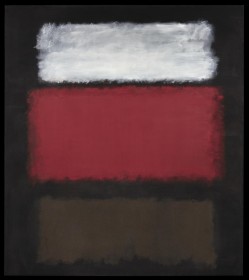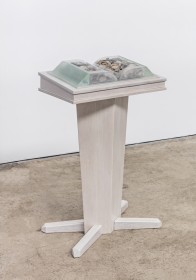Creativity and Intimate Partnership: Artist Couples

Anonymous photographer, Joan Mitchell and Jean Paul Riopelle in Chicago, about 1957. Yseult Riopelle Archives. Work shown: Jean Paul Riopelle, Untitled (detail), about 1957, oil on canvas, 60 × 73 cm. Private collection © Estate of Jean Paul Riopelle / SODRAC (2017)
Creativity and Intimate Partnership: Artist Couples
Jean Paul Riopelle and Joan Mitchell, Jasper Johns and Robert Rauschenberg, Wassily Kandinsky and Gabriele Münter, Jean Arp and Sophie Taeuber: these are just four of the many famous modern art couples whose creative interactions animate the annals of art history. What can we learn about and artist's work when we situate it in the context of his or her intimate relationships? In conjunction with the exhibition Mitchell/Riopelle: Nothing in Moderation, join Kenneth Brummel, Jonathan Katz and Bibiana Obler for a discussion about the influence romantically entangled artists have on one another’s work and on the development of twentieth-century modernism in general.
Kenneth Brummel is the coordinating curator of Mitchell/Riopelle: Nothing in Moderation and the Assistant Curator of Modern Art at the Art Gallery of Ontario. A specialist in late nineteenth- and twentieth-century European and American art, he has worked in curatorial capacities at the Cincinnati Art Museum, The Nelson-Atkins Museum of Art, Kansas City, Missouri, and the Museum of Fine Arts, Boston. He completed his graduate work at Harvard University and The University of Chicago, where he was a PhD student in art history. His recent publications include essays on Joan Mitchell and Jean Paul Riopelle, Andy Warhol, and Anthony Caro.
A pioneering scholar of sexuality in post-war in art and culture, Jonathan D. Katz has studied Jasper Johns and Robert Rauschenberg, and noting that while their partnership was widely acknowledged, they were in the curious position of being understood as a pair, but not as a couple. Katz has written widely on sexuality and postmodernism from the early 20th century through to the work of Robert Mapplethorpe, with a particular emphasis on the queer, post Abstract Expressionist generation. He is Director of the Doctoral Program in Visual Studies at the University at Buffalo, and President Emeritus of the Leslie-Lohman Museum of Gay and Lesbian Art in New York, the world's first queer art museum.
Bibiana Obler is associate professor of art history at George Washington University. She received her M.A. and Ph.D. in the History of Art from the University of California, Berkeley. Her first book, Intimate Collaborations: Kandinsky and Münter, Arp and Taeuber (Yale University Press, 2014) investigates the role of artist couples in the emergence of abstract art. Her second monograph, currently titled Anti-Craft, examines relations between art and craft in the late twentieth century. Obler’s writing has been featured in American Art, Art Bulletin, Artforum, caa.reviews, The Journal of Modern Craft, and Sculpture Journal. She is also co-curating an exhibition with Phyllis Rosenzweig to open at the Textile Museum, Washington, DC, in 2019: Fast Fashion / Slow Art.




